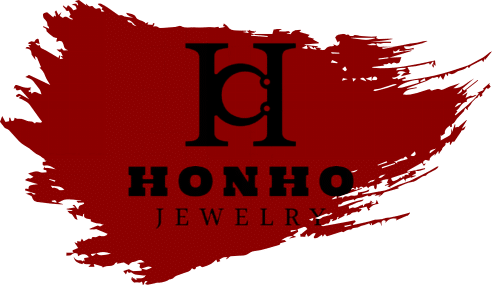10 Questions to Ask When Choosing a Jewelry Manufacturer

Key Takeaways
- Jewelry manufacturers vetting safeguards brand name and product excellence and minimizes expensive mistakes. Establish non-negotiables — ethical sourcing, craftsmanship standards, on-time delivery — prior to outreach to set expectations.
- Apply a checklist-style approach to vetting manufacturers — such as comparing suppliers on materials, production capabilities, MOQs, pricing and quality control. Ask for certifications, sample reports, and documented workflows from prototyping to finishing.
- Confirm factory legitimacy — virtual tours, licenses, and access to engineers, not just salespeople. Demand NDAs for designs and ensure transparent protocols for IP disputes.
- Insist on clear prices that include materials, labor, tooling, finishing and possible add-ons. Shop around for several quotes and payment terms, and don’t just pay big upfront payments with no clear writing.
- Score suppliers on reliability, communication and ethics with a side-by-side table. Do a mini pilot order and benchmark results on lead time, defect rate, and consistency in dimensions and finishes metrically.
- Be on the lookout for red flags such as lack of documentation, erratic communication, and unfavorable reviews. Keep the partnership going with routine quality reviews, joint improvement plans, and formalized feedback loops.
Jewelry manufacturer vetting is the quality, ethics and on-time delivery checking of suppliers. It includes material traceability, fair labor, audit history, capacity and defect rates.
Key proofs like ISO 9001, RJC Code of Practices and third-party lab test reports for metals and stones are essential in this process. Vague pricing, no QC plan and weak communication are red flags that should not be overlooked.
To help you create a shortlist and request samples, the following sections outline steps, tools, and vetting checks in straightforward order.
Why Jewelry Manufacturer Vetting Matters

Vetting a reliable jewelry manufacturer safeguards your brand name and the products that bear it. We define industry standards on craft, metal purity, stone sourcing, and finish quality — before a single piece ships. This buffer helps you sidestep rework, returns, and embarrassing recalls that drain time and cash, preserving hard-earned trust with customers who demand reliable, quality-made pieces.
Effective vetting filters out dangerous suppliers in the beginning. Request sample runs, tolerance sheets, and plating thickness data instead of general assertions. Look at defect rates and remake policies associated with actual dates and order sizes, ensuring you partner with reliable jewelry suppliers.
Vet Map their process control, from alloy mix to polishing and setting checks, so you can see where errors could creep in. A lab-grown diamond line, say, should disclose grade controls and transparent chain-of-custody logs; a gold bangle run includes karat tests, solder specs and finish checks on every batch.
Plus, vetting gets a partner on your side. If you guarantee ethical sourcing, verify it with third-party audits, conflict mineral due diligence, and recycled content certificates. Verify certifications such as ISO 14001 for environmental systems and review their environmental audit reports, as well as how they manage waste and water discharge.
If speed matters, vet their capacity plan, lead-time history, and ship-on-time rates over the last 12 months. If safety and labor care matter to your clients, ask for health and safety records — in the U.S., an OSHA Citation and Violation search can highlight flag-worthy issues for further investigation.
Previous work speaks volumes. Request references with order quantities, SKUs, and time periods. Research on-time delivery, quality drift, and repair velocity. Skipping this step increases the chances of major fallout down the road, especially in the competitive jewelry market.
The UK government’s Policy Note 04/15 even instructs buyers to consider supplier previous performance, a position that translates nicely in private purchasing as well. Verify business license, legal name, tax IDs and ownership. This aids in detecting shell companies and provides you with a collaborator you can use to keep accountable.
Meaningful vetting diminishes external shocks. Disaster recovery for floods, fires, and system outages – including backup power, data, and tool sets. See second-source plating houses or casting shops in case one site goes down, ensuring you have reliable jewelry supplies at all times.
Vet for sanctions and trade restrictions exposure, demand country-of-origin information and a rerouting strategy in geopolitical shifts. Early in sourcing, seek partners investing in novel alloys, rapid prototyping or 3D printing — they get you testing new lines faster and winning speed to market.
Key Questions for Jewelry Manufacturer Vetting

Concentrate on realities that demonstrate compatibility, danger, and enduring worth in the jewelry industry. Check out the list below and compare responses between several reliable jewelry suppliers.
- Materials: metals, stones, finishes, sourcing proof, batch consistency
- Capacity: order range, lead times (6–12 weeks), scalability, in-house vs outsource
- MOQs and pricing: tiers, setup fees, clear cost map, payment terms
- Quality: inspections, audits, ISO claims, defect policy, reports
- Access: factory proof, technical contacts, language, updates, IP safeguards
- Ethics: origin traceability, RJC, labor and environment documents
- Finance: stability, trade references, recent revenue data
1. Material Expertise?
Inquire if they do stainless steel, brass, sterling, gold alloys and stones. Request samples of similar work, such as pvd-plated chains or pavé settings. Validate sourcing quality, hallmarking and batch consistency of finishes/ stones.
Check expertise in gold plating thickness, bespoke moulds, micro-setting, enameling.
2. Production Capabilities?
Verify quantity scope from pilot to big runs, and how they scale with no quality decline. Inquire about how they introduce lines or shifts. Detail CAD, wax casting, 3D printing, laser welding and hand-finishing use cases in their flow.
Inquire as to which processes are in-house vs. Outsourced, and how they manage suppliers.
3. Minimum Orders?
Specify MOQ per SKU and per color or size. Inquire regarding startup MOQs and mini test runs. Don’t forget special low-volume charges such as mold fees, plating setup, or engraving jigs.
Confirm volume discounts or breakpoints with firm tiers.
4. Pricing Structure?
Request a clean cost map: materials, labor, stones, tooling, plating, QA, packaging, freight terms (Incoterms), and taxes. Inquire about payment terms, deposit size and methods.
Flag hidden fees like rush, re-plate, rework, or special packaging. Compare quotes apples-to-apples with identical drawings, finish specs and test reports.
5. Quality Control?
Inquire regarding spot checks, full inspections, and third-party testing. Ask to see recent third-party audits reports and any ISO certificates. Go over defect, return and rework policies with time frames and credits.
Request batch QA reports with measurements, plating thickness and stone checks.
6. Communication Style?
Try out their response time and clarity with a sample brief. Verify English-speaking personnel and a designated account manager. Request update cadence, build photos, and change logs.
Verify they read CADs, tolerances, and finish specs accurately.
7. Direct Factory?
Enquire if they are the factory or trader. Ask for a live video tour and floor photos. Talk to the engineers and bench leads.
Check licenses and factory registration details.
8. Ethical Practices?
Inquire about RJC status or similar schemes. Ask for labor, safety and environmental records. Trace origin for gold, diamonds, and colored stones.
Verify claims with documents, not slogans.
9. IP Protection?
Inquire about how they store and gate your files. Sign NDAs and add no-share clauses. Ban copycat sales to others.
Set steps for disputes and takedowns.
10. Sample Process?
Verify sample flow, CAD to master to T1/T2. Inquire about sample price, lead time and bulk credit.
Give them revision limits and proof points. Insist the sample matches final materials and craft.
Analyzing Supplier Responses

This phase transforms raw responses into crisp indicators of alignment, danger, and benefit for jewelry businesses. Fact check, like-for-like comparison, and claim validation with records, samples, and third-party data are crucial when working with reliable jewelry suppliers. Small slips can snowball quickly—an additional zero on a 500-piece order alters budgets, lead times, and cash flow.
Side-by-side review on key criteria
|
Criteria |
Supplier A |
Supplier B |
Supplier C |
|---|---|---|---|
|
Lead time (days) |
25 |
40 |
30 |
|
MOQ (units) |
200 |
100 |
300 |
|
Capacity (units/month) |
8,000 |
3,000 |
10,000 |
|
QC standard |
AQL 1.5, ISO 9001 |
Visual only |
AQL 1.0, ISO 9001 |
Cross-check everything with invoices, COAs, lab reports and sample checks. Request references to previous clients, how many years they’ve been in business and a portfolio of work demonstrating metal types, settings and finishes.
A wide catalog can reduce vendor splits and quicken workflows when you require chains, clasps and findings all in one spot.
Score for reliability, transparency, and alignment
Rate on a 1–5 scale, weighted if necessary (reliability 40%, transparency 30%, alignment 30%, for example) for reliable jewelry suppliers.
- Supplier A: Reliability 4.5 (on-time data, stable capacity), Transparency 4 (clear docs), Alignment 4 (MOQ fits, diverse catalog).
- Supplier B: Reliability 2.5 (long lead, weak QC), Transparency 2 (missing facts), Alignment 3 (low MOQ helps, narrow line).
- Supplier C: Reliability 4 (high capacity, strong QC), Transparency 4.5 (traceability, audits), Alignment 4.5 (full line, repair policy).
Quality control, communication, and ethics signals
Favor documented QC (AQL plans, test reports), fast sample loops, and fixed contact windows. Look for RJC-CoC, SA8000, or similar audits, and written sourcing rules for stones and metals.
Cross-check numbers. Dishonesty harms ops and brand trust. Assess product knowledge: can they explain prong strength, chain tensile limits, or plating micron thickness in clear terms?
That insight links design choices to long-term wear and function.
Shortlist against minimums
Set non-negotiables: certified ethics, AQL ≤ 1.5, lead time ≤ 30 days, pricing variance ≤ 3%, and responsive support. From the table, shortlist A and C.
Don’t have too many approved suppliers to avoid over-dependence and diversify your risk across geography or product.
Red Flags to Watch For

Vetting a reliable jewelry manufacturer involves proof, process, and ethics checking. Faint signals accumulate to expensive errors, so leverage these checks to identify risks quickly and safeguard your jewelry business.
- Missing documentation or factory proof: No ISO-style quality docs, no Responsible Jewellery Council (RJC) membership, no supplier codes, or no way to verify the site (live video tour, audit, or visit) points to weak controls.
- Thin certifications story: If they cannot show metal purity assays, Kimberley Process for diamonds, chain-of-custody, or GIA-equivalent grading where relevant, expect gaps in traceability and claims you cannot defend.
- No refund or exchange policy: Expecting you to accept unseen goods with no recourse is unfair. A simple remake/exchange/partial credit policy is industry standard for custom and private-label orders.
- Push for large upfront payments with fuzzy terms: Avoid 100% prepay or vague deposit rules. Request milestones, escrow, or letter of credit, as well as defined Incoterms, lead times, and penalties.
- Bad client reviews or sharp discounting: Deep last‑minute price drops on stones suggest padding or bait pricing. A seller chopping tens or hundreds of dollars off a diamond to close probably is overpriced and short-term focused.
- Inconsistent communication: Slow replies, missed calls, or shifting points of contact hint at future delays. Trustworthy partners provide immediate, transparent updates on drawings, samples and ship dates.
- Fixed pricing that feels off: Prices “too good” can hide thin plating, lower metal fineness, or weaker stones. On the flip side, refusal to discuss volume tiers or specs-based quotes blocks healthy negotiation.
- Lack of industry memberships and certification: Credible shops display memberships and audits in the lobby and on their site. If they won’t show ‘em, assume they don’t have ‘em.
- Weak warranty and quality stance: For precious metals made by seasoned master jewellers, less than a 10‑year warranty is a concern. Good companies stand behind solder joints, settings and finish for the long haul.
- Unclear or unrealistic promises: Pushy, aggressive sales talk, instant “yes” to every custom spec, or 2‑day lead times on complex work means risk of shortcuts or missed dates.
- Inflexibility on changes: Refusal to adjust ring size, prong style, or plating thickness during sampling shows poor customer care and rigid processes.
- Sample-to-mass mismatch: Big gaps between sample and batch—weight, polish, stone grading, or plating micron—signal weak process control. Demand golden samples and signed spec sheets.
Beyond the Questionnaire

Surface answers from jewelry manufacturers will only take you so far; real vetting requests evidence, inspects the shop floor, and observes how reliable jewelry suppliers operate under pressure.
Arrange video calls or in-person visits to verify the jewelry manufacturer’s facilities and team.
Video tours do help, but a visit reveals the reality. Request to tour workshops, casting rooms, plating lines and polishing bays. Verify machinery age and maintenance, staffing levels per shift, and unit production goals per day against your projection.
Review quality controls: gauges in millimetres, plating thickness in micrometres, and batch logs. Request to see their business license, ISO 9001 or BSCI certificates, and lab reports. A walk-through exhibits security and refuse disposal.
In low-cost markets like some in India or Thailand, in-person audits assist segregate potent very best from those with inconsistent practices and results. Face time builds trust, sets tone and gives a read on managers who will fulfill your orders.
Request references or case studies from other brands who have used their jewelry manufacturing services.
Request 2–3 contacts and recent case studies with date, product type, order size, lead time, first-pass yield and on-time rate. Call the references and validate defect types, remake counts, and how the factory managed fixes.
Look for test results to prove compliancy for target markets (i.e nickel limits for skin contact products). Check assertions with third-party audits when possible. A track record — supported by documents and real clients — carries more weight than salesmanship.
Test their flexibility and problem-solving skills with a small trial order or prototype project.
Before scaling your jewelry business, run a micro test order to ensure quality control measures are in place. Provide tight specifications such as ring sizes, stone dimensions in millimeters, and prong style to the right jewelry manufacturer. Observe their processes closely, flagging any risks and suggesting solutions to maintain high standards.
Experienced manufacturers justify their decisions on alloy mix and casting techniques to prevent issues like porosity or crooked stones. It’s essential to verify how they source metals and stones, ensuring they align with your brand vision for quality jewelry.
Tracking cycle time, variance, cost drift, and defect rates is crucial. A clean experiment reflects skilled craftsmanship and offers valuable insights into actual costs and lead times, vital for any jewelry supplier aiming for success in the competitive jewelry market.
Monitor ongoing communication and responsiveness after the initial vetting phase.
Good partners respond quickly, send plain notes, and record changes. Establish a weekly check-in, keep tabs on open issues, determine response time agreements.
Keep KPIs simple: on-time ship rate, first-pass yield, and fix time. Have at least two approved suppliers, so you avoid single-point risk and can hold steady on price and timeline.
Long term, keep terms plain, goals shared and reviews regular to build trust on both sides.
Building a Lasting Partnership

A solid relationship with a reliable jewelry manufacturer is built on transparent conditions, consistent results, and mutual benefits. In dynamic markets, jewelry businesses transition from arm’s-length transactions to collaborative connections striving for a win-win solution. What keeps the bond tight is simple: correct specs, on-time orders, reliable jewelry supplies when demand shifts, and fast replies when plans change.
-
Define the scope and specifications. Lock materials, gram weights, stone grades, plating microns and size tolerances in millimeters. Send sketches, CAD files and finish samples to reduce guesswork.
-
Define service levels. Make a deal on-time, order accuracy, rework, and question response times. Bind these to pragmatic solutions and explicit schedules.
-
Map duties and escalation. Identify owners for design/procurement/QA/logistics. Build in a route to escalate concerns and a decision time limit at every stage.
-
Share demand, roadmaps. Provide rolling forecasts and mood boards for trends. Discuss minimum order sizes, batch splits and how to scale up or down in days, not weeks.
-
Ensure you agree on quality. Utilize a communal checklist for incoming metal, casting, setting and finish. Include sample pulls by lot, tensile and scratch tests and third-party audits when stakes are high.
-
Set equitable terms that allow both parties to profit. Apply volume price breaks, firm payment dates and currency schemes. Reasonable conditions enable each of us find gain and hold expenses foreseeable.
-
Control risk and ethics. Check chain of custody, labor regulations and security. Utilize traceable metals and stones, and always maintain updated supplier documentation.
-
Track value & review. Run monthly scorecards on delivery correctness, defect rates, and lead time. When buyers perceive solid value, they stick around, fend off competing proposals, and increase orders.
Schedule regular check-ins and quality reviews to maintain high standards and address issues promptly.
Hold weekly calls during new launches and move to biweekly for steady runs. Go over open PO’s/yield/scrap. Check first-article samples and pull random checks every 1,000 units. Log defects by type, agree fixes and due dates. Ensuring reliable jewelry suppliers deliver the right products on time keeps your ops smooth and your cost in check.
Foster open communication to adapt to changing business needs or new jewelry design trends.
My early notes on season themes, metal price moves, and promo dates highlight the importance of reliable jewelry suppliers. By exchanging quick videos from the floor to illustrate tooling or stone problems, I ensure that communication remains direct and transparent, allowing my jewelry business to adapt flexibly to market changes.
Build mutual trust by honoring agreements, providing feedback, and celebrating successful collaborations.
Pay on time, provide clear feedback, and credit victories, whether it’s a run with no defects or a rush order shipped on time. Consistent delivery from reliable jewelry suppliers and adaptable supply foster confidence, encouraging them to satisfy demands and maintain the relationship.
Conclusion
Vetting a jeweler requires time, but it is worth it. Solid evidence trumps slick persuasion. Transparent pricing, concise specifications, and organized audit files demonstrate true craftsmanship. Little experiments reveal major realities. Sample ring – prong work, polish, stone set. An assay slip displays gold fineness. The stress test indicates chain strength in newtons.
Real partners move quick and tell it like it is. They share lead times, reject rates, fix steps. They open to a shop visit. They agree on MOQ, warranty and care. They back the craftsmanship.
To choose wisely, utilize the questions, checks, and red flags above. Build a short-list. Conduct small experiments. Track the results. Maintain records. Want help fashioning your vetting list or score card? Reach out and inquire.
Frequently Asked Questions
What certifications should I ask a jewelry manufacturer to provide?
When engaging with jewelry manufacturers, always ask for ISO 9001 (quality systems) and RJC (responsible practices) certifications. Additionally, request third-party audit reports and ensure compliance with material regulations like REACH and nickel-release tests to uphold quality standards.
How can I assess product quality before a large order?
Order production-grade samples from reliable jewelry suppliers, not showroom pieces! Define tolerances, plating thickness, and stone-setting standards. Ensure they send you test reports for metal purity and durability. Use a 3rd party inspection with AQL standards. Once you’re satisfied, run a small pilot batch to validate consistency at scale.
Which red flags should make me avoid a supplier?
Steer clear of unreliable jewelry suppliers that exhibit ambiguous ownership, unsubstantiated addresses, or an unwillingness to be vetted. Watch out for fuzzy pricing, moving ship dates, or no references from reliable jewelry manufacturers. Unrealistic lead times or extremely low prices are typical indicators of danger in the jewelry industry.
What questions reveal true production capacity and reliability?
Evaluate the monthly capacity and peak-season output of reliable jewelry suppliers, ensuring current utilization aligns with your jewelry business needs. Verify lead times, batch sizes, and minimum order quantities while requesting on-time delivery rates and defect rates to ensure quality control measures.
How do I verify ethical sourcing and compliance?
Ask for a documented chain of custody for metals and stones from reliable jewelry suppliers. Request lists of suppliers and due diligence reports, and check RJC CoC and conflict-free declarations to ensure you are sourcing from responsible jewelry manufacturers.
What contract terms protect my designs and timelines?
Have a solid NDA and IP ownership when working with reliable jewelry suppliers. Set specs, tolerances, AQL, and approved samples to ensure quality control measures are in place for your jewelry business.
How do I build a long-term partnership after vetting?
Start small with a pilot order from reliable jewelry suppliers. Discuss predictions and collaboratively construct a quality plan, establishing KPIs around on-time delivery, defects, and responsiveness. Conduct quarterly reviews and continuous improvement projects to ensure quality control measures are in place.
Related Posts

Understanding Wholesale Jewelry Pricing and How It Works
Understanding Wholesale Jewelry Pricing and How It Works When people see a ring that costs $6 wholesale and retails for $59, they often

The Art of Shine in Jewelry Polishing and Plating Techniques
Discover how polishing and plating transform modern jewelry with expert techniques for lasting shine and elegant finishes.

Τι Νοιάζει Πραγματικά τους Αγοραστές Ανοξείδωτου Κοσμήματος Εκτός από την Τιμή
Τι πραγματικά νοιάζει τους αγοραστές ατσάλινων κοσμημάτων πέρα από την τιμή ανθεκτικότητα υποαλλεργικά υλικά και μοντέρνο στυλ.
